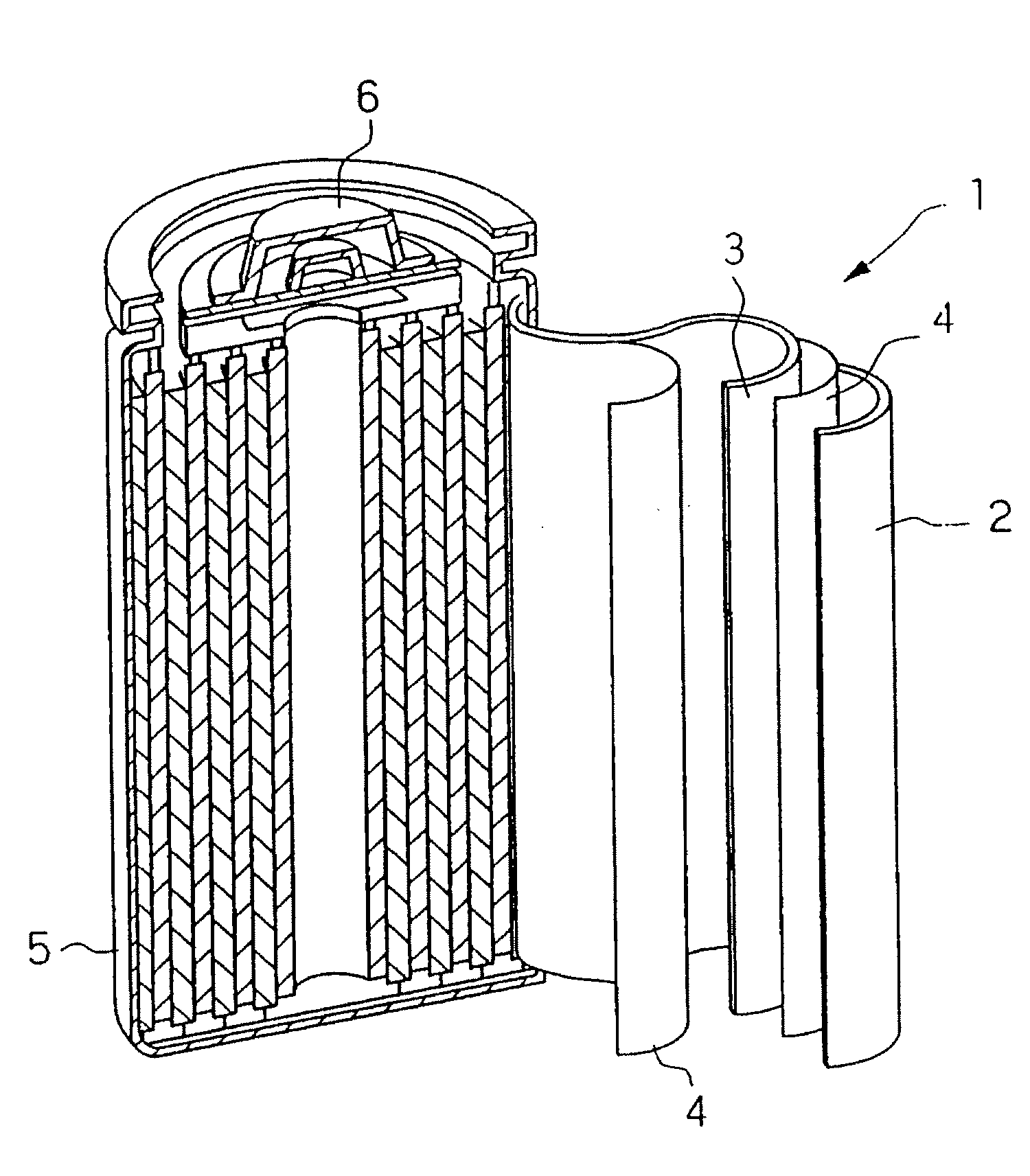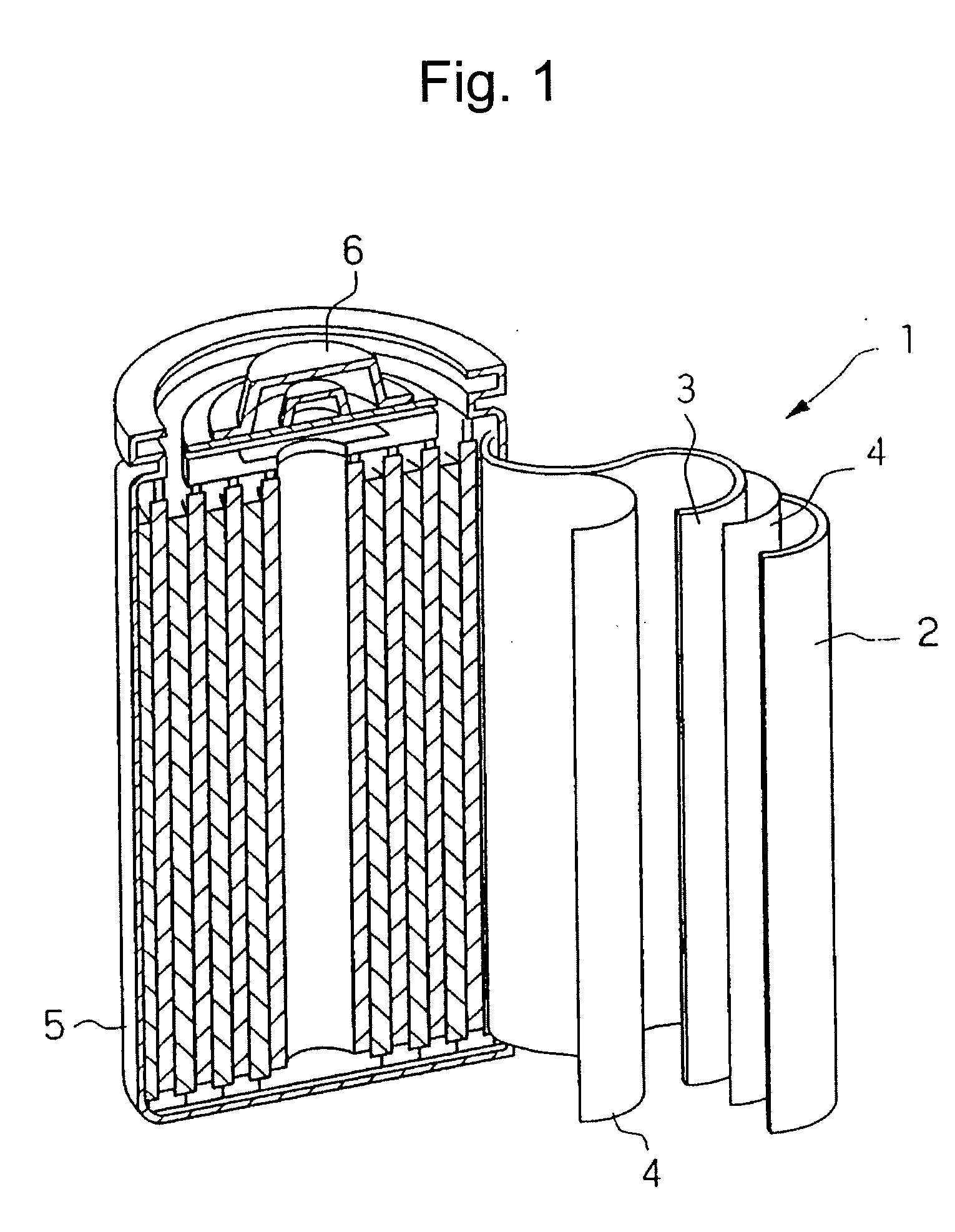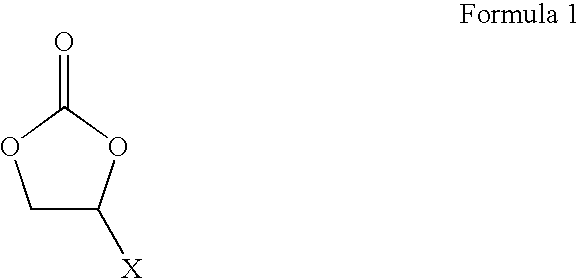Lithium secondary battery
a secondary battery and lithium technology, applied in the field of lithium secondary batteries, can solve the problems of large irreversibility loss, still has problems with deterioration, and the current high theoretical capacity of graphite and carbon group active materials is not adequate for high-capacity lithium batteries, so as to prevent volume expansion and high capacity. the effect of high capacity
- Summary
- Abstract
- Description
- Claims
- Application Information
AI Technical Summary
Benefits of technology
Problems solved by technology
Method used
Image
Examples
example 1
[0058]LiCoO2, PVDF as a binder, and carbon as a conductive material were mixed in a weight ratio of 92:4:4 and dispersed in NMP to form a positive electrode slurry. The positive electrode was manufactured by drying and rolling a 20 Mm thick aluminum foil coated with the positive electrode slurry. A silicon and graphite composite was mixed with styrene-butadiene rubber as a binder, and carboxymethylcellulose as a viscosity enhancing material, in weight ratio of 96:2:2 and dispersed in water to form a negative electrode slurry. The negative electrode was manufactured by drying and rolling a 15 μm thick copper foil coated with the negative electrode slurry.
[0059]A 20 μm thick separator comprising polyethylene was inserted between the manufactured electrodes, wound, pressed, and inserted into a cylindrical can.
[0060]A lithium secondary battery was then made by pouring an electrolyte into the cylindrical can. In preparing the electrolyte, a 1.3 M solution of LiPF6 was provided in a mixed...
example 2
[0061]Example 2 was prepared in the same way as described in example 1 except for adding 2 weight % of SN in lieu of 1 weight %.
example 3
[0062]Example 3 was prepared in the same way as described in example 1 except for adding 5 weight % of SN in lieu of 1 weight %.
PUM
| Property | Measurement | Unit |
|---|---|---|
| battery capacity | aaaaa | aaaaa |
| thick | aaaaa | aaaaa |
| thick | aaaaa | aaaaa |
Abstract
Description
Claims
Application Information
 Login to View More
Login to View More - R&D
- Intellectual Property
- Life Sciences
- Materials
- Tech Scout
- Unparalleled Data Quality
- Higher Quality Content
- 60% Fewer Hallucinations
Browse by: Latest US Patents, China's latest patents, Technical Efficacy Thesaurus, Application Domain, Technology Topic, Popular Technical Reports.
© 2025 PatSnap. All rights reserved.Legal|Privacy policy|Modern Slavery Act Transparency Statement|Sitemap|About US| Contact US: help@patsnap.com



